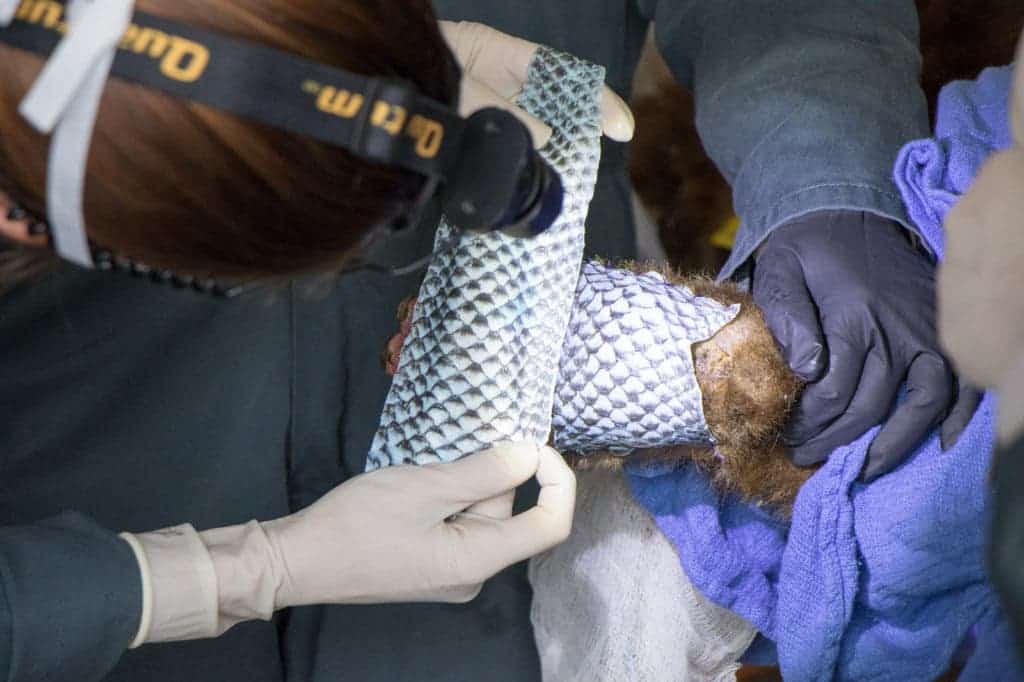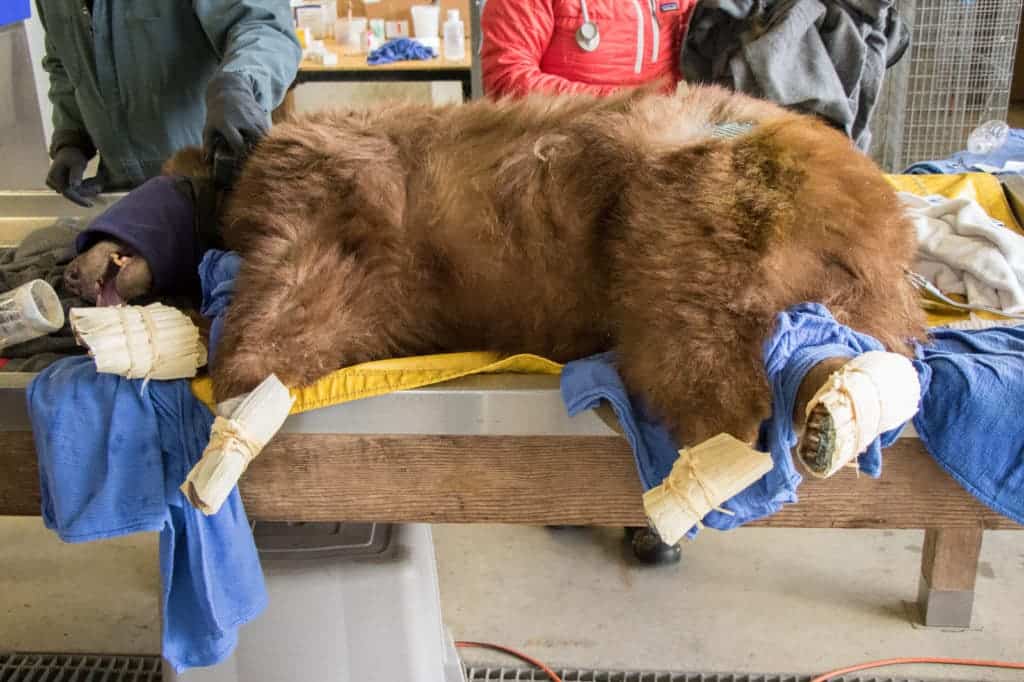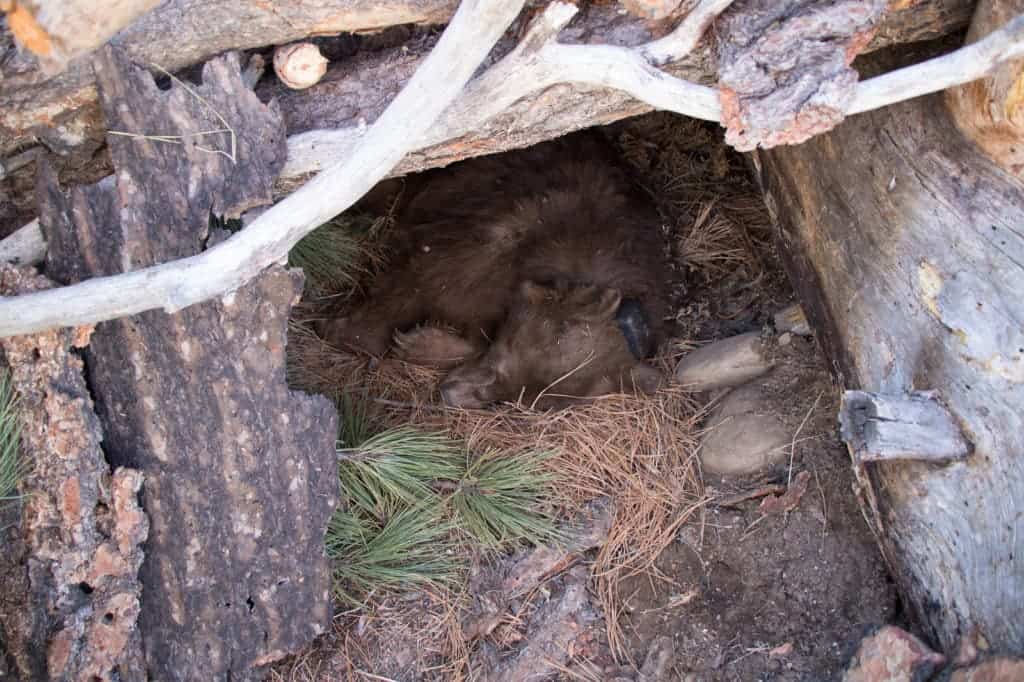Vets from the California Department of Fish and Wildlife have used an unusual treatment for two bears and one cougar suffering from severe burn wounds: fish skin.

In December 2017, the Thomas Fire ravaged through California, blazing approximately 281,893 acres (114,078 hectares). It was the largest wildfire in modern California history.
It destroyed over 1,000 buildings, forced 100,000 people to evacuate, and was only put out on January 12, 2018. It claimed at least 15 lives, but humans weren’t the only ones to suffer — wildlife was even more severely affected.
Among the animal victims of the fire were two adult bears (one of which was pregnant) and a 5-month-old cougar from Los Padres National Forest. The bears had third-degree burns on their paws — one of them was so badly injured it couldn’t even stand. Instead of treating them with the conventional bandages, veterinarians went for a different option: fish skin.
As strange as it seems, fish skin (tilapia in particular) has been used to treat burns before, on humans. Brazilian doctors have used fish skin to treat burn victims, due to a shortage of transfer collagen, which is the standard treatment. The doctors then reported that the tilapia skin is very rich in collagen proteins which help with the skin healing and scarring process. The treatment shows promise and is now undergoing clinical trials. But it wasn’t just the desire to try a new, unusual treatment — vets had several reasons why they opted for tilapia skin instead of bandages.
For starters, working with bears and cougars, especially when they’re injured, is no easy feat. Normally, they’re sedated for medical procedures, but you can only sedate them so many times, and bandages need to be changed regularly. Additionally, putting pills in their food is also not very effective because there’s a good chance they just won’t eat it. To make matters even worse, the bears and the cougar would have almost certainly chewed through their bandages, and the textile could clog their intestines. Bandages just wouldn’t do, the vets quickly understood. That’s when they turned to Dr. Jamie Peyton, Chief of Integrative Medicine at the UC Davis Veterinary Teaching Hospital.
Peyton typically works with domestic animals, but he has a particular interest in burns. He created a homemade burn salve for the bears’ paws and a process for sterilizing tilapia skin. The technique is not yet approved by the Food and Drug Administration for use in the United States and had not been tried on veterinary patients. However, it’s not like they had many other choices.
To keep the tilapia skin on the burns, Peyton cut pieces exactly matching the size of their paws, and then sutured them over the wounds while the bear was under anesthesia. Additional temporary wrappings, including rice paper and corn husks, were added, with the intention of stretching out the amount of time it would take for the animal to chew down to the fish skin bandage. All these materials are safe to eat for the animals.

“We expected the outer wrapping to eventually come off, but we hoped the tilapia would keep steady pressure on the wounds and serve as an artificial skin long enough to speed healing of the wounds underneath,” Peyton said.
Lastly, she also used acupuncture to aid the bear with pain management, a highly controversial technique. The validity of veterinary acupuncture has not yet been thoroughly proven, as systematic reviews in 2001, 2006, and 2009 all found insufficient evidence to support or disprove its efficiency. However, both the American Animal Hospital Association (AAHA) and American Association of Feline Practitioners (AAFP) issued joint guidelines for the management of pain in cats and dogs, citing a “solid and still growing body of evidence for the use of acupuncture for the treatment of pain in veterinary medicine to the extent that it is now an accepted treatment modality for painful animals.”
Whether or not the acupuncture worked, the tilapia bandages seemed to do wonders, and this made a huge difference. An ultrasound revealed that one of the bears was pregnant, which meant that she needed to be reintroduced to the wild as soon as possible.
“That was a game changer for us, because we knew it wouldn’t be ideal for her to give birth in confinement,” Clifford said. “We aren’t really set up to have a birth at the lab holding facilities, and we knew there was a high probability that she could reject the cub, due to all the stress she was under. We needed to get her back into the wild as quickly as possible.”

Thankfully, aided by the innovative bandages, the healing process was quick enough to facilitate their release into the wild. A new habitat was found for them (as their old one had burned down). The cougar, which was younger and also had lighter burns, was also reintroduced to the wild. The entire project was hailed a success.
This effort could be even more significant in the future. As temperatures continues to rise and drought becomes more and more common in California, wildfires will also likely become more and more common.
“This treatment has the potential to be used successfully on all kind of burn patients, both domestic and wild,” said Dr. Deana Clifford, acting manager of the Wildlife Investigations Lab in Rancho, who first handled the bears.
“For us, at the Wildlife Investigations Lab, it’s been an invaluable experience because California’s changing climate means that we’re likely to see more wild animals impacted by catastrophic wildfires. By better understanding what resources are needed to care for injured wildlife and what treatment techniques increase healing speed, we can make the most informed treatment decisions, reduce animals’ time in captivity and provide guidance to other facilities caring for burned animals.”


